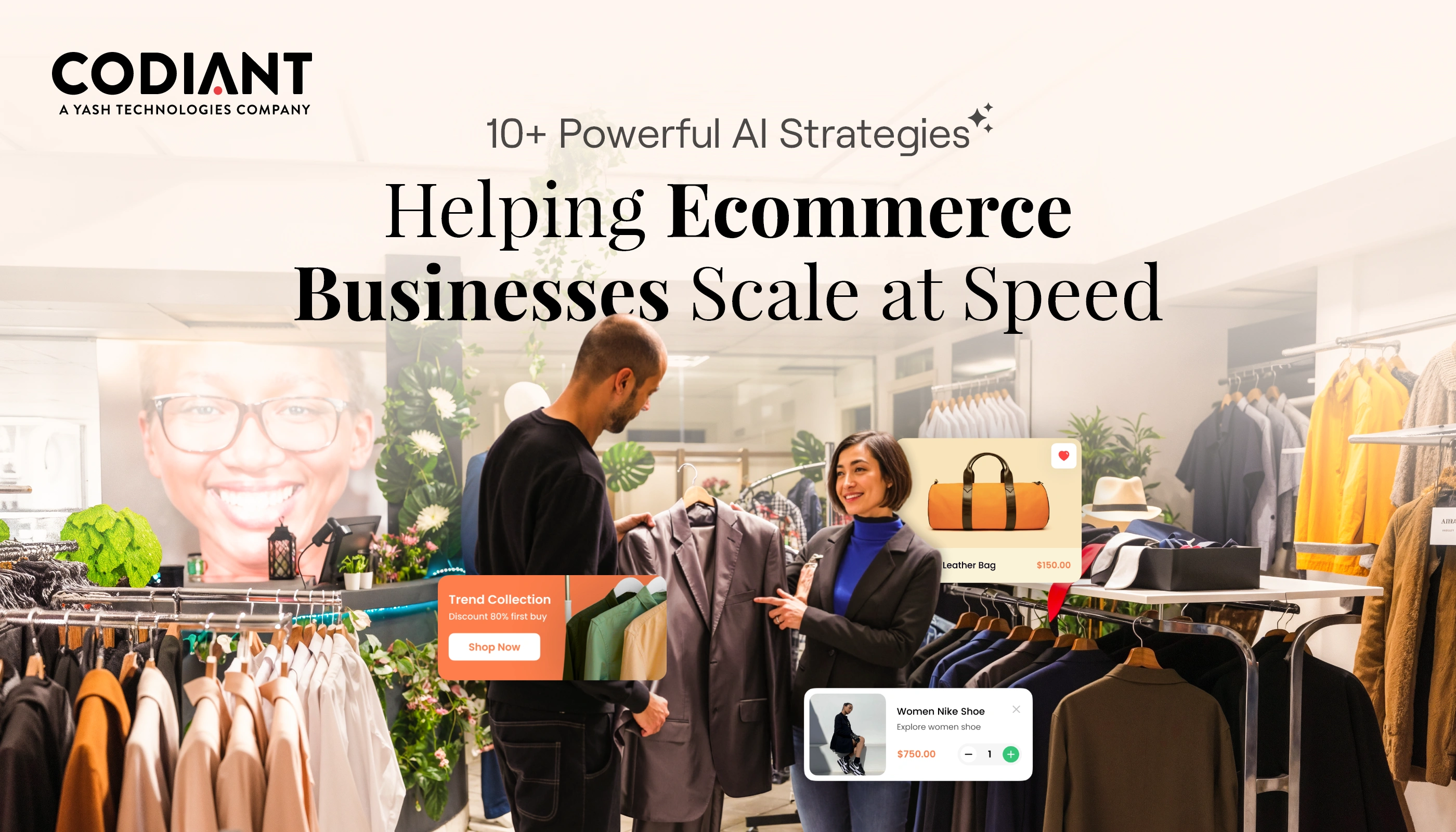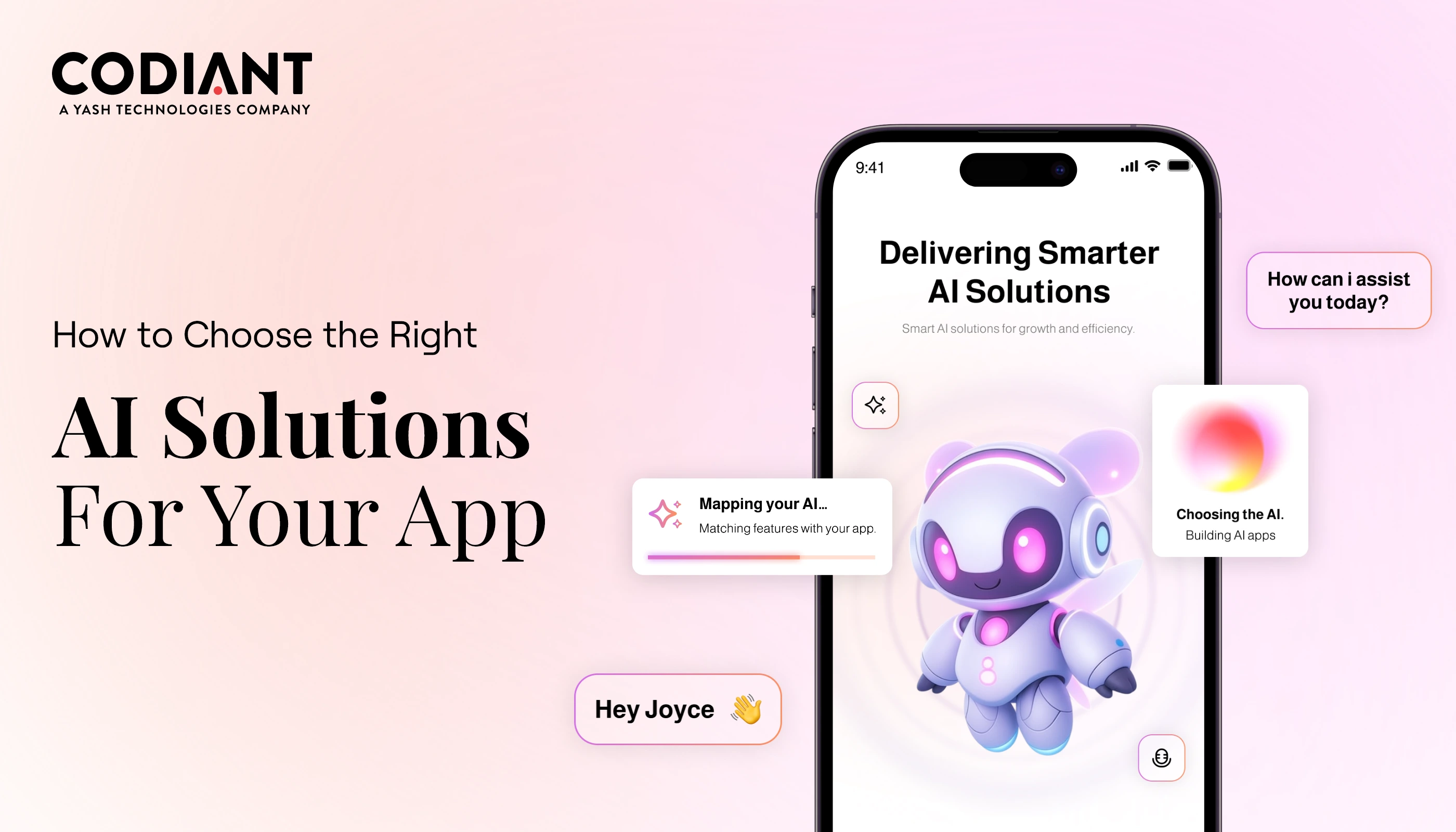Factors Influencing Shopper Behavior: Psychology Behind Online Purchase
Table of Contents
Subscribe To Our Newsletter

There’s a rising trend of consumers opting for online shopping worldwide. It has transformed the way people shop, going beyond just convenience. The ability to shop anytime, anywhere, without the need to visit a physical store offers several perks. Being able to quickly browse options and make purchases in minutes quickly satisfies our demands for instant results.
But, don’t forget that behind every click and purchase are psychological factors that influence decisions. Brands or businesses that understand factors can create more engaging and meaningful experiences for their customers.
Codiant’s “BEANIT” app for coffee lovers is a perfect example of understanding psychology behind online purchase! This interactive platform leverages psychological elements to drive online coffee sales by addressing the specific needs and desires of coffee enthusiasts.
Codiant’s Beanit: A Case Study in Behavioral Psychology
Here, look at the psychology behind the scenes of developing BEANIT – an ecommerce marketplace.

-
Instant Delivery
The app delivers coffee straight to customers’ doors, satisfying the demand for quick results. It cuts out the hassle of waiting in lines and provides a fast and smooth experience for customers. The best part is that it is faster than traditional coffee shops.
-
Ultimate Convenience
BEANIT makes buying coffee easy with a wide range of products and a simple, user-friendly design. This saves time and effort, making it perfect for busy people. With just a few taps, customers can browse and order without the need to visit a store.
-
Personalized Experience
The app lets users customize their coffee exactly how they want it. This gives customers control over their orders, making each experience personal and unique. Whether it’s adjusting flavors or ingredients, Beanit makes it easy to get the perfect cup.
-
Social Proof
Reviews and ratings from other customers can heavily influence what we buy. Beanit uses this social proof to build trust and show its reliability. Positive feedback from others makes new customers feel confident in their choice.
Now, let’s talk about the factors that influence shopper behavior below.
Critical Factors Affecting Shoppers Behavior
Branding, colors, and UI-UX design all impacts user behavior. The same goes with e-commerce website. Explore the key factors that shape shopper’s behavior. By understanding these pieces, businesses can improve shopping experience, lower cart abandonment rates, raise sales, and keep customers happy.
1. Unique Selling Point (USP)
The USP of any product or service defines the purchase decision. The online buyers analyze products according to their perceived worth. The online space provides an array of options for different types of products which somehow make it complex.
However, scarcity and urgency make a product seem more valuable. Limited-time deals, countdowns, and low-stock warnings play on shoppers’ fear of missing out (FOMO), pushing them to buy faster. This makes the product feel more important and leads to quicker decisions.
In addition to this, shoppers rely on the first information about the product such as quality and price. It works like a reference point to evaluate other offers. E-commerce industries can increase their revenue by placing higher-priced products next to lower-priced ones. This makes inexpensive items seem like better deals.
2. Social Validation and Customer Feedback
When shopping online, people often look to others for guidance. This is why social proof matters influence shopping. Reviews, ratings, and testimonials can help convince them to buy. When a product has lots of good reviews, shoppers feel more confident while buying it. This is part of the bandwagon effect, where people copy others when they’re not sure.
A popular product often seems more trustworthy or valuable simply because others have bought it. Businesses should encourage customer reviews and show ratings clearly on product pages. Even negative reviews can build trust and show authenticity if managed well, helping shoppers feel more confident in their purchase.
Like, Codiant has developed an e-commerce store “Kunooz” for online e-commerce beauty and personal care stores! On its app, you can see reviews and ratings for building trust and knowing what customers think about the product or offerings.
3. Personalization and Tailored Experiences
Have you ever heard that 91% of shoppers are more likely to buy from brands that offer relevant deals and recommendations? Consumers appreciate brand understanding and personalized recommendations based on their shopping history! This greatly affects their buying decisions. The reason is simple: when shoppers see options that match their interests, they are more likely to respond positively and make a purchase.
Remember, personalization is much more than recommendations. It also involves targeted emails, special product categories, and personalized website designs. Businesses that use AI-driven recommendation systems or behavior-based marketing can meet consumers’ desire for a smooth and relevant shopping experience.
Let’s consider a real-world example of the recommendation’s engine “Netflix” and understand how it impacts customer behavior. Netflix’s algorithm is a master of suggesting content tailored to individual tastes. But where does it drive success? This has kept users engaged for hours, driving subscription renewals and reducing churn.

4. Emotional Triggers
Emotions define how customers behave and frequently result in impulsive shopping, which people justify later. In online shopping, groups that create wonderful emotions—via website design, product descriptions, or advertising messages—are much more likely to turn informal traffic into consumers.
A positive emotional experience builds trust and loyalty, encouraging repeat purchases. For example, a visually appealing ecommerce web development that reflects the brand’s character can let customers feel emotionally connected to the brand and this triggers more purchases.
Also, storytelling in product descriptions can create relatable stories that resonate with clients. Another emotional factor is trust. Secure payment methods, strong policies, and open communication channels build trust. It makes shoppers feel safer in the online environment, where worries about fraud and scams are common.
5. Simplicity and User Experience
The online shopping experience should be great. This relates to cognitive ease, which means how simple and smooth a process feels.

When shoppers use an easy-to-navigate website, they’re more likely to make a purchase. But if they face problems like slow loading times, confusing layouts, or hard-to-use navigation, they may lose interest and leave without buying.
A smooth and easy checkout process helps reduce stress for shoppers. By eliminating unnecessary steps, offering different payment options, and making form filing simpler, businesses can improve the user experience and increase sales.
6. More Choices and Decision Fatigue
Several buying options can attract more customers, but too many choices can overwhelm them at the same time too. This causes frustration and leaves them with abandoned carts. Here, simplifying choices or adding filters and recommendations can help reduce this overwhelm and make shopping easier and more enjoyable.
To overcome this, businesses should craft their ecommerce solutions carefully and direct buyers through the decision-making process with clear categories, filters, and product comparisons. Limiting options and highlighting best-sellers or recommended items can reduce cognitive load and help shoppers make faster, more confident decisions.
7. Free Shipping and Discounts
Discounts or free shipping are like influencers that influence people in the digital shopping space. Buyers are psychologically bound to seek value in purchases!

The psychology behind free shipping and discount deals is somewhat related to the concept of “Loss Aversion”, which suggests that people tend to avoid losses more than they acquire gains.
When shoppers see that shipping is free or that they are saving a percentage on their purchase, they feel as if they are avoiding a “loss” in the form of extra costs. This perception makes them more likely to complete a purchase. On other hand, high shipping costs or hidden fees often act as restrictions, increasing the likelihood of cart abandonment.
It’s a good way for businesses to offer free shipping whenever possible or set minimum order amounts. It helps to encourage customers to buy more from them and get free delivery benefits. Further, offering limited-time discounts to shoppers goes like they are getting a better deal than competitors, which increases the chances they’ll complete their purchase.
8. Social Commerce Influence
Social commerce influences consumer decisions. Social platforms including Facebook, Instagram, and Pinterest allow brands to effortlessly connect with their consumers. They attract them through attractive visuals, unique content, and related influencer promotions.
Online shoppers are influenced by what others purchase or recommend, specifically if it’s from someone they admire through social channels. Influencer marketing takes benefits of this tendency, inspiring people to buy products that have been “agreed” by their favorite characters.
Moreover, it is clearly stated in “Social Comparison Theory” that people often judge themselves by comparing themselves to others, making them more likely to be influenced by peers and social media players.
Wrapping Up
Knowing why people shop online is key for businesses that want to attract and keep customers and boost sales. Important factors include how valuable products appear, the impact of others, personalized deals, easy-to-use websites, emotional feelings, and peer influence. A well-designed website and smooth shopping experience also matter.
By understanding these factors, businesses can create improved online shopping plans that resonate with customers, resulting in more sales and loyal consumers. This method improves the shopping experience and forms a stronger bond between the brand and its buyers.
Frequently Asked Questions
The primary psychological factors influencing the behavior of online buyers include trust, perceived value, and social proof. B2B buyers seek confidence in the product or service and the credibility of the vendor. They also prioritize efficiency, cost-effectiveness, and reviews from other businesses or industry professionals.
Trust is pivotal in the purchase process. B2B buyers often have high stakes in their purchases, so they require strong assurances that the product or service will meet their business needs. They look for secure websites, positive customer testimonials, industry certifications, and established relationships.
Perceived value is crucial because buyers are highly focused on ROI. They assess whether the product or service provides tangible benefits like cost savings, increased productivity, or competitive advantage. A clear demonstration of how the offering meets specific business objectives, along with supporting data like case studies and testimonials, reinforces the perceived value.
In e-commerce markets, peer reviews and social proof hold substantial weight. The buyers trust feedback from other businesses that have used the product or service, especially within the same industry. Detailed case studies, endorsements from credible organizations, and industry-recognized certifications can reassure buyers of the effectiveness and reliability of the product, driving purchase decisions.
A seamless, user-friendly experience is critical for online buyers who expect efficiency and simplicity in their online purchases. A well-designed website that offers easy navigation, quick access to product information, streamlined checkout processes, and responsive customer support helps reduce friction.
Personalized recommendations based on previous purchases or browsing behavior can significantly influence online buying decisions. Buyers appreciate suggestions that are tailored to their specific business needs, helping them discover solutions they might have overlooked. This personalization demonstrates that the vendor understands their requirements and can offer relevant solutions, making them more likely to proceed with a purchase.
Featured Blogs
Read our thoughts and insights on the latest tech and business trends
How AI Helps eCommerce Businesses Scale Faster: 10+ Proven Strategies
- December 4, 2025
- Artificial Intelligence E-commerce
Running an eCommerce business today means managing more products, more customers, and more data than most teams can handle manually. As order volumes rise, tasks like customer support, inventory planning, product discovery, and marketing start... Read more
How to Choose the Right AI Solutions for Your Existing App
- December 1, 2025
- Artificial Intelligence
Businesses today are under pressure to move faster, deliver personalized experiences, and operate with greater accuracy. This is why many enterprises and startups are now looking for ways to add AI features to their mobile... Read more
How to Enable AI for Smart Diet Planning and Client Progress Tracking
- November 26, 2025
- Artificial Intelligence
Smart diet planning and consistent progress tracking have become essential in a world where people want faster, more accurate ways to manage their health. Traditional methods like manual calorie counting or generic meal charts often... Read more




